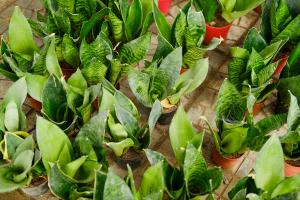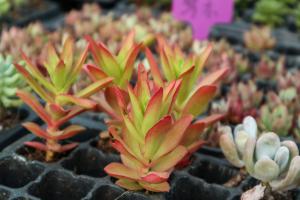Is the Money Tree Plant Poisonous to Humans?
The Money Tree Plant, also known as Pachira Aquatica, is a popular houseplant that is believed to bring good luck and fortune. This plant, originally from Central and South America, is not only easy to care for but also visually appealing. However, one question that frequently comes up is whether the Money Tree Plant is poisonous to humans or pets.
Plant Description and Health Benefits
The Money Tree Plant is a member of the Bombacaceae family and can grow up to 60 feet tall in its natural habitat. However, when grown indoors, it usually only grows between 4 and 6 feet tall. This plant has a thick trunk and dark green leaves that form a canopy at the top. It is often sold with braided trunks, giving it a unique appearance.
In traditional Asian cultures, the Money Tree Plant is believed to bring good fortune, wealth, and prosperity. Feng Shui practitioners also believe that it has the power to harmonize the energy in a room and promote positive energy flow.
Aside from its symbolic meanings, the Money Tree Plant is also believed to have health benefits. It is said to improve air quality, aid in better sleep, and reduce stress levels. These benefits make this plant an excellent addition to any home or office space.
Possible Health Risks of the Money Tree Plant
Despite its many health benefits and positive energy, some people may still wonder whether the Money Tree Plant is poisonous to humans. The good news is that this plant is not toxic to people or animals when ingested. However, touching or handling the plant may cause skin irritation or an allergic reaction in some individuals, especially those with sensitive skin.
The sap of the Money Tree Plant contains alkaloids, which can cause skin irritation, itching, and redness. Ingesting the leaves or stems of the plant may also lead to minor stomach discomfort or nausea. Therefore, it is recommended to handle the plant with care and always wash your hands after touching any plant or soil.
Tips for Safe Handling of the Money Tree Plant
Here are some tips for safe handling of your Money Tree Plant:
Wear gloves and long sleeves when pruning or handling the plant.
Wash your hands thoroughly after touching the plant or soil.
If you have sensitive skin, avoid touching the plant or wear gloves when handling it.
If you have children or pets, keep the plant out of reach, as they may be tempted to chew on the leaves or stems, causing minor stomach upset.
Conclusion
The Money Tree Plant is a beautiful and low-maintenance houseplant that has numerous health and symbolic benefits. While the plant is not toxic to humans or animals when ingested, it may cause skin irritation or an allergic reaction in some individuals when handled. Therefore, it is essential to handle the plant with care and always wash your hands after touching any plant or soil.

 how many times do yo...
how many times do yo... how many planted tre...
how many planted tre... how many pine trees ...
how many pine trees ... how many pecan trees...
how many pecan trees... how many plants comp...
how many plants comp... how many plants can ...
how many plants can ... how many plants and ...
how many plants and ... how many pepper plan...
how many pepper plan...































